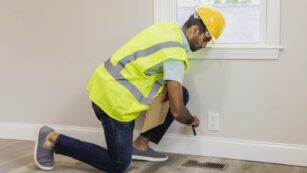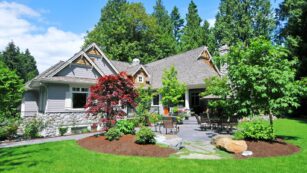
The green building trend continues to grow, and with it, the financial advantages of building homes that are energy-efficient and environmentally friendly. Homebuyers are increasingly looking for properties that offer long-term sustainability, reduced environmental impact, and lower operational costs.
While many are aware of the benefits of green homes in terms of energy savings and utility bills, there are other less obvious advantages, especially when it comes to mortgages. In this article, we’ll dive into how green building practices can help homeowners unlock hidden mortgage benefits, from better loan terms to long-term financial growth.
The Growing Popularity of Green Homes
Green homes have quickly evolved from a niche market to a mainstream preference. The desire for eco-friendly living is driven by several factors, including the growing awareness of climate change, the appeal of sustainable materials, and the potential for long-term savings.
As more homeowners strive to minimize their environmental impact, the demand for green homes continues to increase. This growing trend not only benefits the environment but also offers tangible financial advantages for those who choose to build or buy eco-conscious homes.
Building green isn’t just about installing solar panels or using recycled materials—it’s about creating an energy-efficient, cost-effective living space that delivers both comfort and financial savings. Green building goes beyond sustainability; it affects mortgage options and financial planning in ways many homeowners may not realize.
Lower Energy Costs and Long-Term Savings
One of the primary reasons homeowners choose green homes is the substantial reduction in energy costs. By incorporating energy-efficient systems such as high-performance insulation, energy-efficient windows, and renewable energy sources, green homes typically require less energy to heat and cool. These savings on utility bills accumulate over time, and this is where the true financial benefits of green homes truly begin to unfold.
Lower energy consumption has a direct impact on the mortgage landscape. Lenders are increasingly recognizing the value of energy-efficient homes, viewing them as a lower financial risk. Lower utility bills mean more disposable income for homeowners, which can result in lower monthly mortgage payments. By making your home more energy-efficient, you’re not only saving money, but you’re also demonstrating fiscal responsibility, which can help when applying for a mortgage.
Green Home Financing
One of the most appealing aspects of building or buying a green home is the potential for better mortgage loans. Many mortgage lenders are now offering special financing options for energy-efficient homes, which can help buyers secure better loan terms. These financing options may include lower interest rates, special government-backed loans, or discounts on closing costs.
In particular, government-sponsored programs like the Federal Housing Administration’s (FHA) Energy Efficient Mortgage (EEM) program allow homeowners to finance the costs of energy-saving improvements directly into their mortgage. This means you can make green upgrades without needing to pay upfront, effectively incorporating the improvements into your monthly mortgage payment. For homebuyers looking to invest in green homes, these special financing opportunities can make the process more affordable and accessible.
Self-employed buyers pursuing energy-efficient properties can benefit from a bank statement mortgage program that qualifies income using 12–24 months of bank deposits rather than W-2s or tax returns, enabling purchases, refinances, or cash-out improvements to fund green upgrades.

Additionally, lenders tend to offer more favorable rates for homes with energy-efficient features because they reduce the potential for unexpected costs. With energy-efficient homes, buyers can avoid the risk of future expenses like rising utility costs, which could impact their ability to keep up with mortgage payments. For lenders, this lowers the risk associated with offering a mortgage loan, and they’re often willing to pass those savings on to the buyer in the form of better terms.
Green Homes and Property Value
In addition to potential savings on utility bills, green homes can appreciate at a faster rate than conventional homes. This trend is largely driven by the increasing demand for sustainable living, coupled with the growing number of buyers who prioritize energy efficiency. A well-built green home that incorporates sustainable features can be a valuable selling point, ultimately increasing its long-term value.
This is particularly important for those seeking to secure a mortgage loan with a long-term perspective. Homes equipped with eco-friendly features—such as energy-efficient HVAC systems, solar panels, and high-quality insulation—are often viewed as investments in long-term value. A green home not only saves money during ownership but is also likely to retain or increase in value over time, making it a smarter financial decision for prospective buyers.
Tax Incentives and Green Building Benefits
Homeowners building or purchasing green homes can also take advantage of tax incentives and rebates that reduce the overall cost of construction or home improvement. Various federal, state, and local programs offer incentives for energy-efficient home projects. These incentives can range from direct rebates to tax deductions and credits, which lower the upfront cost of building or upgrading to a green home.

For example, the U.S. government’s Residential Energy Efficiency Property Credit offers tax credits for solar systems, wind turbines, and other renewable energy sources. Additionally, certain energy-efficient upgrades, such as high-efficiency appliances, may also be eligible for tax credits.
These financial incentives can be particularly beneficial for homeowners looking to make green upgrades during the construction of a new home or during renovations of an existing property. When combined with the potential for lower mortgage rates, tax credits make building or buying green homes more financially viable. By reducing initial costs, these incentives can further enhance the appeal of green homes for buyers who want to make a sustainable choice without compromising financial security.
The Long-Term Financial Security of Green Homes
Building or buying a green home is more than just an environmentally responsible choice—it’s also a financially sound decision that offers long-term financial security. The combination of lower utility costs, better mortgage terms, tax incentives, and increased property values makes green homes an attractive investment for homeowners looking to secure their financial future.
Moreover, the financial stability that comes with owning a green home can extend beyond the mortgage payments. With lower ongoing expenses, homeowners can enjoy greater financial freedom, allowing them to invest in other areas, such as retirement savings, home improvements, or family goals. A green home offers both immediate and long-term financial benefits, contributing to a more secure financial future.
Conclusion
The financial benefits of building or buying a green home go beyond just energy savings. Green building practices offer homeowners a wide array of hidden advantages, including access to better mortgages, increased property values, tax incentives, and long-term savings. By choosing to invest in an energy-efficient home, buyers not only contribute to a more sustainable future but also set themselves up for long-term financial success. The future of homeownership is green, and with the right financial approach, it’s an investment that pays off both financially and environmentally.












